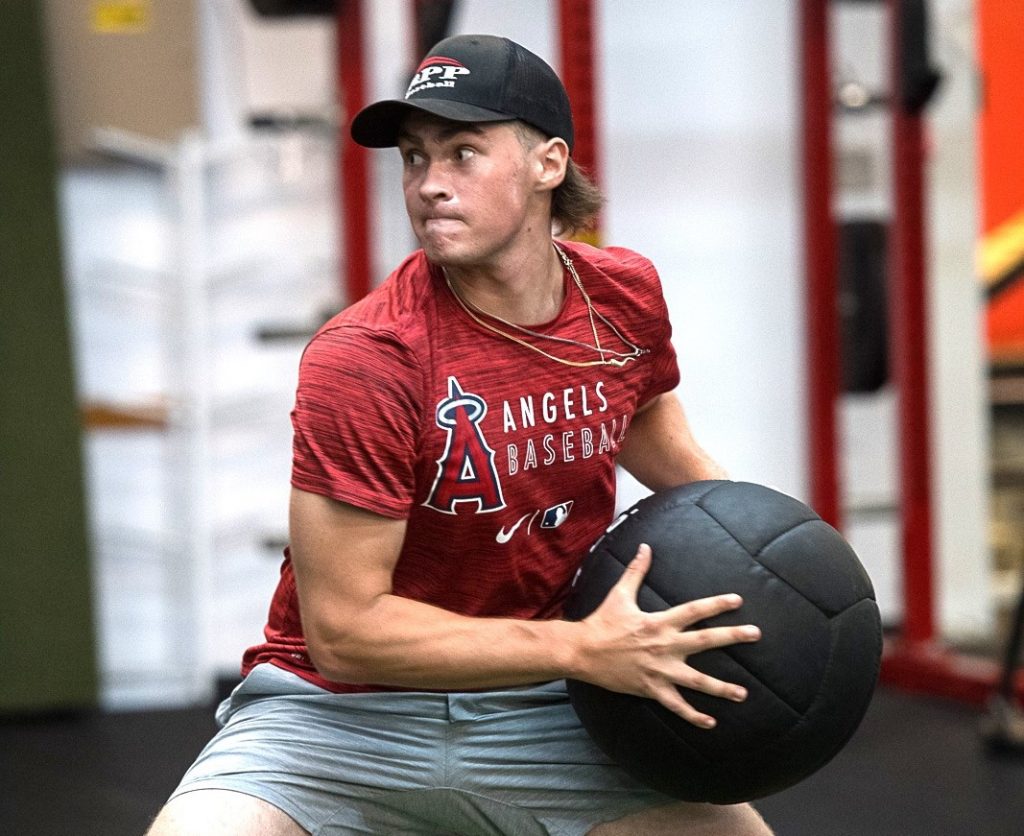
Getting strong in the off-season to prepare for great performance on the field is paramount, but let’s not forget that it’s the athlete that finishes the season as strong as he started that usually reaps the most reward. Drops in velo, both on the mound and off the bat, as well as injuries, can all be a result of not training during the season. Pros do it, collegiate players do it. You should as well. So, you basically are the creator of your own destiny.
Four to five months of off-season training is intended to develop many of the strength and motor abilities needed to succeed in any specific sport. Whether it be strength, velocity or speed, these abilities will only remain effective at a heightened level for a given period after the training stops. This is what former Red Sox PT Mike Reinold refers to as “managing a controlled fall” (click here).
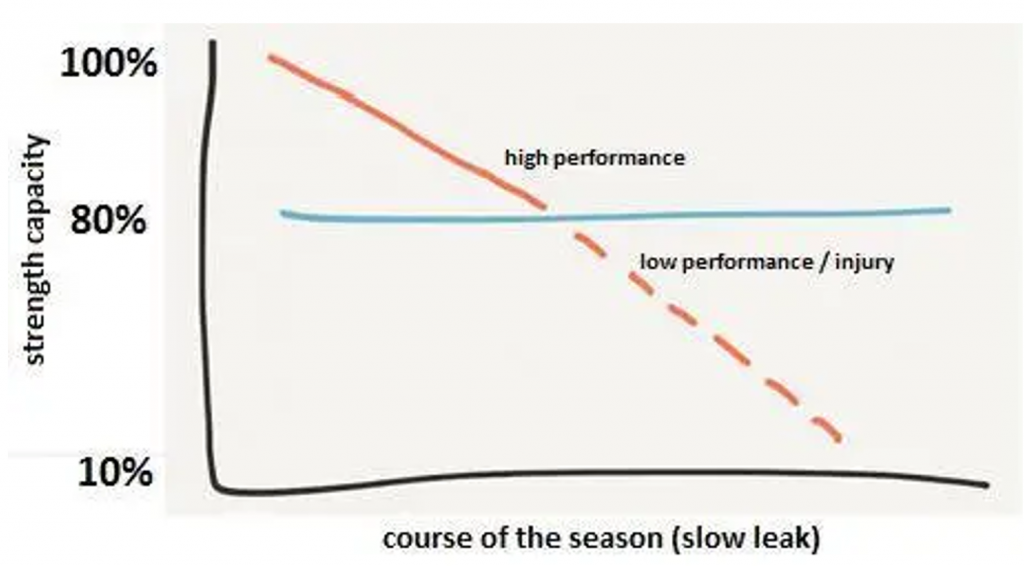
This drop in retention of specific athletic components is referred to as “the residual training effect”. Below is a chart based on the two studies showing the specific components needed to excel on the field as well as the amount of time (residual effect) before they begin to falter. Take a close look at the right hand column.
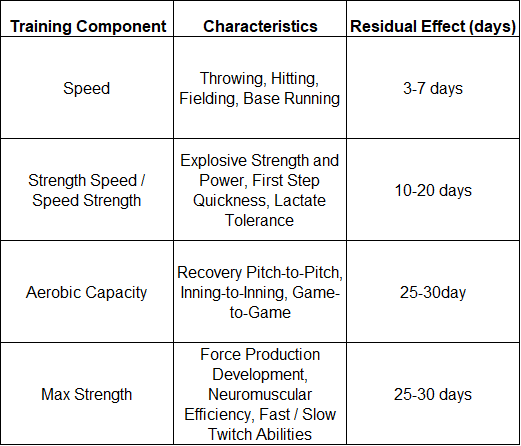
Based on the chart above, we can see that once tryouts and practices begin, the “speed” component will get more than its fair share of attention. Unfortunately in March, with the official start of the season still a month away, if an athlete only develops their speed component, they will lose the other components namely “accelerative strength” by the time the season even begins in April.
Basically, if all the other components are not attended to through in the weight room, overall performance will begin to be negatively affected. The impact of the lack of in-season training is cumulative, and by the start of summer ball in June, sooner or later all of the off-season’s hard work will have significantly dissipated. Doesn’t matter the age, we’ve seen this movie many times and it’s equally applicable to position players and pitchers. Without in-season training, reductions in strength and power and mobility will take a toll on optimal performance.
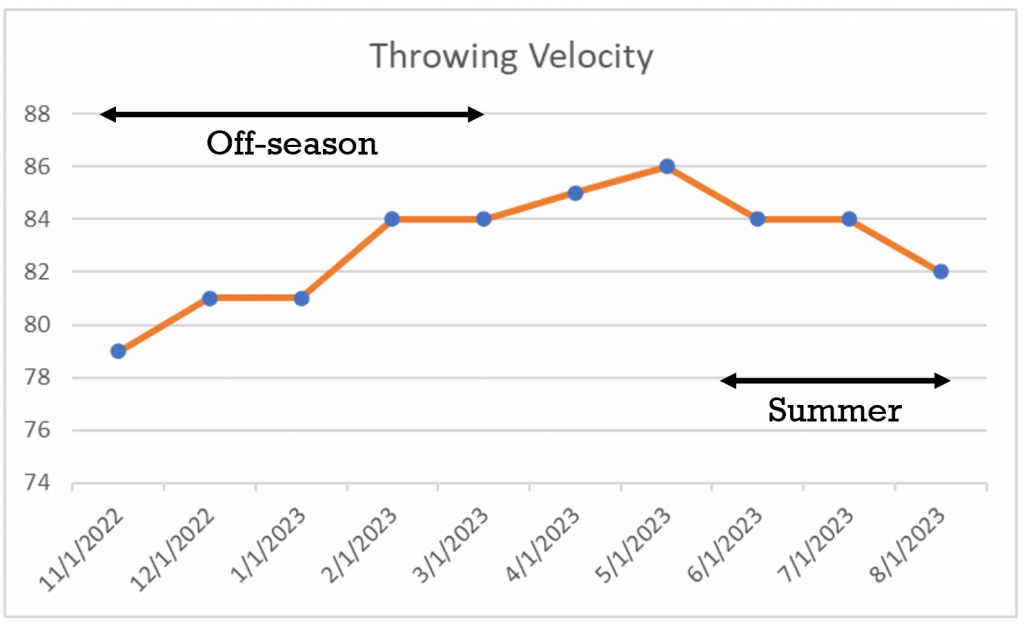
Below is a summary of each of the above athletic components above, as well as what we develop in our off-season training programs.
Speed
This type of speed trained in the off-season is geared more to the strength side of speed (acceleration). But, once baseball starts, it becomes more specific in the form of throwing, hitting fielding and base running and becomes the responsibility of the coach to train these qualities through practice and in the form of short sprint work, NOT running laps and poles!! I mean which one of these guys do you think produces more power?
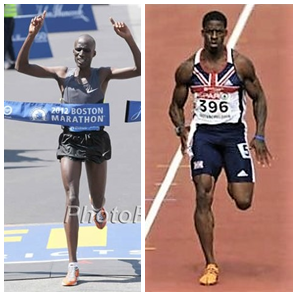
Strength-Speed / Speed-Strength
This is the big one. Strength-speed is defined as moving a moderately heavy weight as fast as possible. Speed-strength can be best defined as speed in conditions of strength. In essence, it is utilizing lighter loads at very fast velocities. Through testing, we create an “force-velocity” profile for the athlete and program accordingly for the in-season.
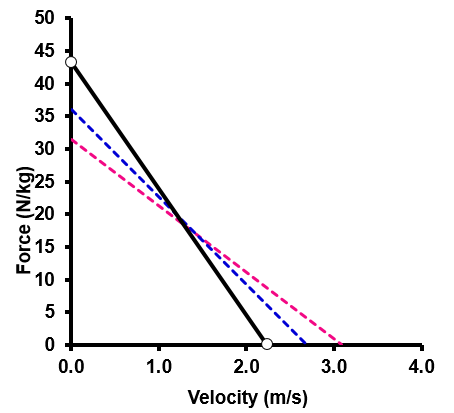
Aerobic Abilities
This is slow, steady state cardio that aids in recovery and only needs to be trained 2-3 times per month while in-season. While absolutely necessary in small doses, any more can have a negative effect on the athlete’s explosiveness.
Absolute Strength
This is the ability to exert force maximally and moving towards increasing the 1RM. This is primarily worked on in the early off-season and like aerobic abilities, has a long residual effect meaning that we do not need to train it more than 2-3x per month in-season. Remember, we’re not trying to get stronger in-season, we’re trying to maintain our existing strength that we’ve built up in the off-season. We’re much better served to spend the time utilizing more ballistic exercises that utilize lighter intensities and performed at quicker speeds in order to get more explosive.
Trap Bar Jumps
Athletes and coaches should know how fast the athlete will lose each specific ability gained in off-season training (say “strength “or “speed” for example once he stops training for it). In other words, they need to know the residual effect of each type of training and make sure all components are attained to, throughout the season.
So, for all of you who put in the hours this off-season, you should continue to maintain your strength and recovery abilities by getting 2-3 days/week of in-season training. You have worked too hard to let it slowly slip away through the season. And for those of you who didn’t strength train this off-season (shame on you), you really can’t afford not to.
Registration (13-16 year olds) – Click Here
Registration (16 and older) – Click Here
See ya’ in the gym…
By Nunzio Signore (BA, CSCS, CPT, NASM, FMS)
Studies:
-
- Bondarchuk AP (1981). The physical preparation designing in power disciplines of track and field. Kiev: Health Publisher (Zdorovie, Russian). http://www.exrx.net/ExInfo/ResidualTraining.html
- Issurin V (2010). New horizons for the methodology and physiology of training periodization. Sports Med. 40: 189-206.
